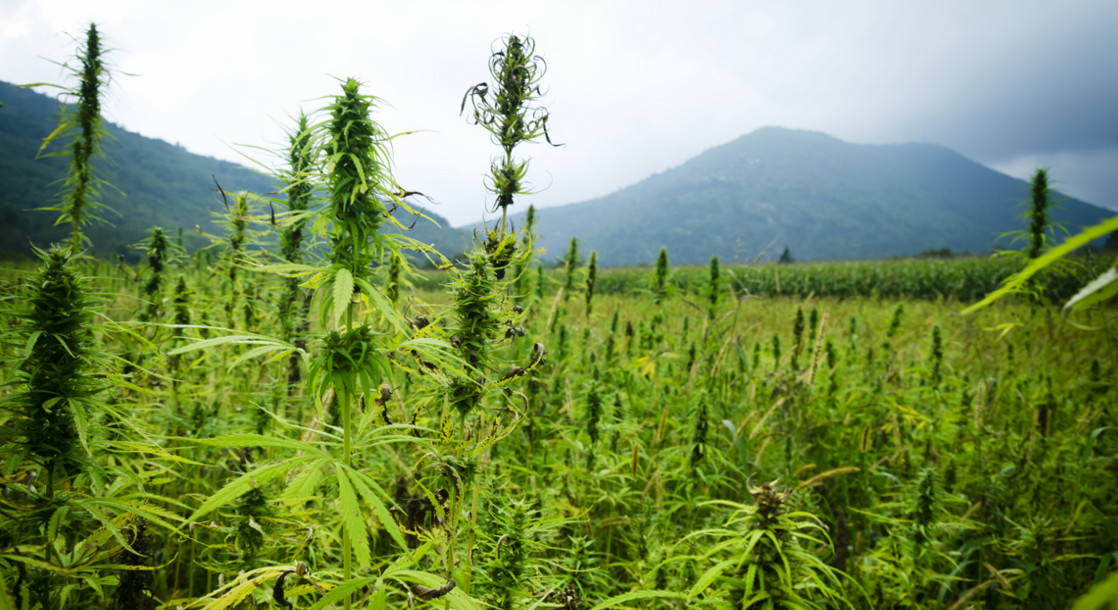A research group at the University of California-Davis has joined forces with a Colorado-based biotech firm, Front Range Biosciences, to create a genomic map for industrial hemp.
The UC-Davis project, led by viticulturist and enologist Dario Cantu, will only sequence the genes for hemp, a variety of cannabis with less than 0.3 percent THC (read: it won’t get anyone high).
“We are now excited to have the opportunity to study the genome of hemp,” said Cantu in an Oct. 26 press release. “Decoding its genome will allow us to gain new insight into the genetic bases of complex pathways of secondary metabolism in plants.”
Cantu’s lab is only handling the DNA sequencing and computational genetics portion of the project. Tissue culturing, DNA extraction, and funding for the project comes from Front Range Biosciences, which specializes in breeding cannabis and providing disease-free clones to licensed cannabis operations.
Both Front Range Biosciences and UC-Davis can conduct their research with little to no federal interference. This is partly due to the 2014 federal “Farm Bill,” which permits hemp cultivation for research purposes so long as it’s approved by a state’s agricultural department. Sending extracted DNA samples through the mail isn’t a problem, either, since Front Range’s DNA samples don’t contain THC or any other cannabinoid found in the cannabis plant.
“When DNA is isolated, it’s not really industrial hemp anymore,” Dan Flynn, a representative for the College of Agricultural and Environmental Science at UC-Davis, told MERRY JANE during a phone call. “When our campus council looked at it, they didn’t see an issue.”
Front Range Biosciences currently studies both hemp and marijuana – cannabis with greater than 0.3 percent THC (read: the kind that gets people high). In collaborating with UC-Davis, the firm seeks to unlock hemp’s agricultural potential, which includes breeding cultivars that are disease, drought, and freeze-resistant. If hemp is grown for industrial purposes, growing it outdoors would be the most cost-effective approach, since huge quantities of plant material would be needed to produce hemp-based paper, construction materials, textiles, or food products. Vaught anticipates his company could create breeds of hemp with new structural properties, so crops grown on a mass scale are easier to harvest with combines. Designing hemp that can produce specific cannabinoids, terpenes, or flavonoids is also in the works, but first the company needs to decipher the plant’s genetic code.
“Nobody really knows the genetics or the backgrounds of where some of these plants came from,” says Jonathan Vaught, the CEO of Front Range Biosciences. “There’s a lot of misinformation out there. There’s been a lot of crossbreeding in the black market community over the last thirty to forty years, so it’s really difficult to know, a lot of times, what you actually have.”
The genomic map is also critical for breeding cannabis for medicinal, nutraceutical, or industrial purposes. With a map, cultivators can rely on traditional cross-breeding to generate new strains with specific, customized properties. In other words, there would be no need for genetic modification (GM) techniques like those used by Monsanto or AgBio, which have aroused concerns for some environmentalists and consumers. Traditional breeding has the added benefits of requiring less time and resources than invasive GM methods, too.
Although the UC-Davis team is one of the first to work on a genomic map for hemp, it’s not the first lab to map the genome for Cannabis sativa in general. In 2011, a Canadian team sequenced the DNA for Purple Kush. In 2014, a research group led by Nolan Kane and Daniela Vergara at the University of Colorado-Boulder began mapping the genome for marijuana. Additionally, a private company in Oregon, Phylos Bioscience, is also mapping the cannabis genome, and Colorado State University-Pueblo is conducting its own research into the genetics of hemp, too.
Will Front Range Biosciences expand its project to include other universities’ genomic projects? It’s possible. “I do, potentially, see us funding some research here in Colorado,” says Vaught. Profit can come from the projects’ discoveries, such as patentable novel hemp strains or extraction products; hence the interest of firms like Vaught’s. He adds that he’s been in talks with Kane’s group at CU-Boulder, and he’s eyeing some of the projects at CSU-Pueblo, as well.
“It’s going to take a community to crack this nut,” Vaught continues. “It’s a brand new genome, it’s a brand new crop. The genetic pool is very mixed up at this point, and there’s just a lot of groundwork we need to do before we can do the really exciting things that people think about with crops.”
Vaught cites the corn genome as an example of the manpower required to create a reliable genomic map: it took $30 million and two dozen labs around the world to map the corn genome. Corn and cannabis contain roughly the same number of genes — around 30,000 — so it may require a comparably-sized army of scientists to produce a comprehensive genomic map for Cannabis sativa.
UC-Davis may serve as a hub for the next generation of weed scientists as the campus embraces cannabis as a legitimate subject for serious scientific study. Along with Cantu’s project, the school kicked off a “Physiology of Cannabis” course in the spring, designed to teach biology students about the plant’s inner workings and how its cannabinoids interact with the human body. It’s the first University of California course devoted entirely to weed.











